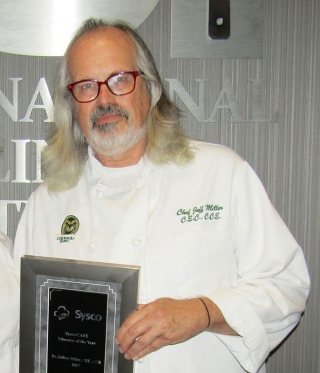
Service to Others within the Foodservice Industry
02 January 2018A foodservice partnership featuring jobs needing to be filled with people needing jobs
By Lisa Parrish, GMC Editor
Restaurants are in dire need of employees, especially back of house personnel that won’t leave after the first dinner rush. There are some people in the community who are disadvantaged and without training but would be willing to work. What about a partnership that brings these two groups together for both of their benefits?
This partnership idea is currently being beta tested in several Fort Collins, Colo., restaurants with positive results. Colorado State University (CSU) is working with the Matthews House, a local non-profit organization that serves disadvantaged youth transitioning to adulthood, the National Restaurant Association and a small cohort of students with no foodservice training but a willingness to be trained and work.
Dr. Jeffrey Miller, CSU associate professor and program coordinator for the Hospitality Management Program, and his colleagues began thinking about this idea several years ago. A Matthews House volunteer met with Miller to discuss how the two groups could partner and train underprivileged youth for a future in the foodservice industry.
“We wanted to aim the program at mostly back of the house operations,” Miller said. The participants needed to be taught a wide range of skills including culinary and behavioral training. The culinary piece included basic ProStart skills while other instruction focused on personal hygiene and how to keep a job including being on time and how to call in sick to work. “We found out no one was taking the time train these kids,” said Miller.
Once the curriculum was set and the students selected, the next piece was to find restaurants for student employment. Miller turned to Hot Corner Concepts, an independent association of Fort Collins restaurants. “The restaurant owners are good citizens concerned about the wellbeing of the community,” Miller said. Students were soon employed as pantry workers, vegetable prep cooks and dishwashers. The plan is continue their culinary instruction and for them to move up the foodservice ladder.
“This is a high-touch program,” Miller commented. Matthews House workers frequently visit students on the job and coach them on how to handle work-place stress and other issues that may arise. “We found part of the program’s success resides in the students getting frequent, positive attention.”
Miller became aware that the NRA was also in the process of developing a similar program that trained disadvantaged youth for culinary careers. He met with NRA representatives and the group shared and discussed program content ideas. Coincidentally, the NRA was piloting their program version in various cities around the country. Depending on the success of the test sites, there is a potential for the curriculum to be scalable for other foodservice training programs that want to work with local non-profit organizations and roll out similar concepts.
Miller believes that in order for programs that train challenged youths for culinary careers to be successful, they will need to be strongly supported by: an organized and highly-motivated local social work agency; local restaurants willing to give up their time to support the mission; as well as local culinary educators willing to train nontraditional students.
Despite how difficult this may seem, Miller has hope that programs such as the one in Fort Collins and those being tested by the NRA will be successful at bridging the gap between those who need jobs and employers looking for people willing to work.
“From the feedback we have received, the program is working just like we hoped, which is not always the case. The employers are working successfully with the students and the students are exhibiting the correct behaviors and surviving the day-to-day stresses of employment. Our next step is to gather hard data and determine statistical factors of success,” Miller remarked. “It’s a win-win for everyone.”
The final piece of the CSU program that Miller foresees adding in the future is a mentoring component. He would like to begin a peer-to-peer mentoring criteria with students from the Matthews House program and the CSU hospitality management program. “This would improve our educational offerings and become part of the hands-on leadership curriculum.” Another win-win situation for everyone involved.
